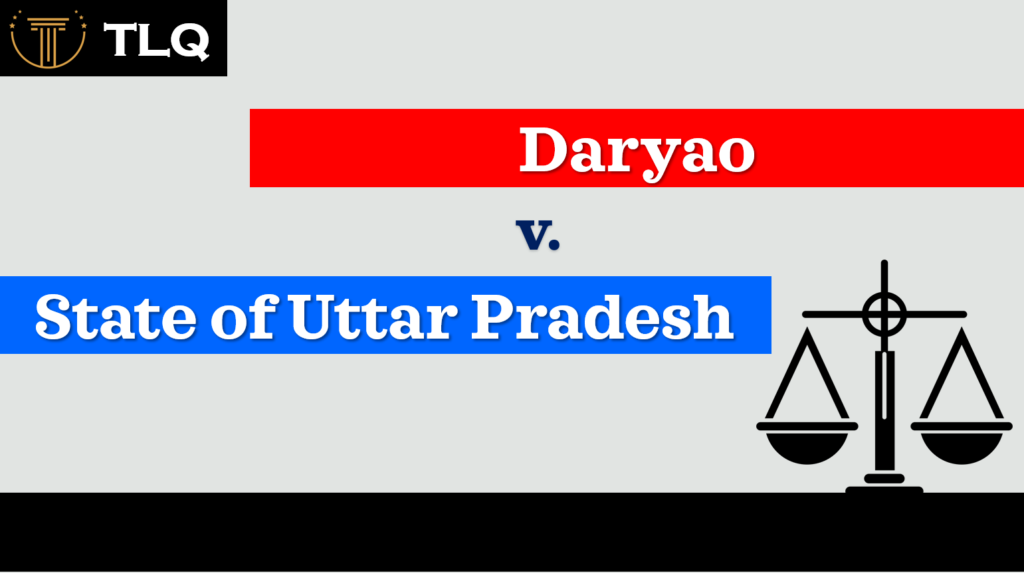Published On: October 15th 2025
Authored By: Srishti Sinha
School of Law, University of Mumbai, Thane Sub-Campus
Introduction
The idea of marriage has always been closely tied to ceremonies, customs, and the physical presence of families and communities. In India, marriage is not only a personal commitment but also a legal and social institution. Traditionally, solemnization has required rituals performed in person, whether it is the saptapadi under Hindu law, the signing before a registrar under the Special Marriage Act, or the ijab and qubool under Muslim law. However, the digital era, particularly during and after the Covid-19 pandemic, has challenged this traditional understanding. Restrictions on travel, social gatherings, and physical mobility led many couples to look for alternatives, and online platforms became a surprising yet practical medium. From Zoom weddings to virtual nikahs, people started solemnizing their marriages in front of computer screens. What was initially seen as a temporary adaptation is now becoming a social reality. This evolution, while innovative, raises serious questions under Indian law. Can a marriage be valid if the parties are not physically together? Does a virtual wedding meet the statutory requirements of presence, witnesses, and ceremonies? How does one prove such a marriage in court? These questions are not merely technical, they determine rights to inheritance, maintenance, custody, and even legitimacy of children. Therefore, the debate on digital marriages is not just about adapting traditions to technology, it is about ensuring that personal laws, statutory frameworks, and constitutional guarantees of equality and dignity are not compromised. This article seeks to explore the legal challenges of virtual marriages and online nikahs in India, analyze the position in courts, and suggest reforms that balance modern realities with the sanctity of marriage as recognized in law.
Legal Framework for Marriage in India
In India, marriage is governed both by personal laws based on religion and by statutory law applicable to all citizens. The validity of a marriage depends on whether the essential conditions laid down in these laws are fulfilled. Understanding these requirements is important to evaluate whether virtual or online marriages can fit within the existing framework.
Hindu Marriage Act, 1955 (HMA):
For Hindus, a marriage is considered valid only if:
- The parties fulfill the conditions of marriage under Section 5 (such as age, capacity to consent, absence of prohibited relationships).
- The marriage is solemnized according to customary rites and ceremonies under Section 7. The Act specifically mentions that the saptapadi (seven steps before the sacred fire) is a recognized essential ritual when applicable.
This means the law emphasizes physical performance of ceremonies, which creates doubts about whether a video call ceremony can satisfy these requirements.
Special Marriage Act, 1954 (SMA):
The SMA provides a secular framework for inter-faith and civil marriages.
- Parties must give notice of intended marriage to the Marriage Officer.
- After 30 days, the marriage may be solemnized in the presence of th Marriage Officer and three witnesses.
Here, the phrase “in the presence of” has traditionally been interpreted as physical presence. Whether presence through a virtual medium like Zoom can qualify remains legally uncertain.
Muslim Personal Law:
Under the Islamic law, a valid Nikah requires:
- Ijab (offer) and Qubool (acceptance) between the bride and groom.
- Presence of two witnesses (for Sunni law, as Shia law requires stricter conditions).
- Payment of Mehr (dower).
The law does not prescribe a particular form of communication, which has led some scholars to argue that online Nikahs could be valid, provided offer and acceptance are made clearly and witnesses attest to it. However, Indian courts have not given a consistent ruling on this issue yet.
Christian Marriage Act, 1872: Marriages under this Act must be performed by a licensed priest or minister in a church, or before a Marriage Registrar. The law assumes physical presence of parties before the officiant, leaving little scope for virtual solemnization.
Parsi Marriage and Divorce Act, 1936: The Act requires that marriage be solemnized according to Parsi religious ceremonies and in the presence of a priest and two witnesses. This again presumes the physical attendance of all parties.
Substantially, it is observed that across all Indian personal and statutory laws, the common thread is the expectation of physical solemnization and presence. None of the laws were drafted with digital technology in mind, which is why the legality of online marriages remain ambiguous.
Virtual Marriages: Are they Legally Valid?
The question of whether a marriage conducted through video conferencing or an online platform can be legally recognized depends on how strictly courts interpret the statutory requirement of “solemnization” and “presence”.
- Requirement of Presence in Law: Most Indian marriage laws, whether under the Hindu Marriage Act, the Special Marriage Act, or the Christian Marriage Act, use terms such as “in the presence of witnesses” or “solemnized by ceremonies”. Traditionally, courts have understood these provisions to require the physical presence of the bride, groom, witnesses, and officiant at the same place. For example, under the Special Marriage Act, the Marriage Officer must solemnize the marriage in the presence of the parties and three witnesses. Another example is under the Hindu Marriage Act, ceremonies like saptapadi cannot be meaningfully performed without physical presence. This creates a direct conflict when marriages take place via Zoom or other digital platforms.
- Judicial Trends in India: So far, Indian courts have not given a uniform ruling on the validity of online marriages. However, some developments are worth noting, such as, in Deepinder Kaur v. State of Punjab (2020), the Punjab and Haryana High Court observed that marriage through video conferencing cannot be considered invalid merely because parties were not physically together, provided statutory conditions are fulfilled. Conversely, in cases under the Special Marriage Act, courts have generally emphasized the need for parties to appear before the Marriage Officer physically, making virtual solemnization doubtful. Thus, the judicial approach remains uncertain and case-specific, leaving couples in legal ambiguity.
- Virtual Nikahs: Muslim marriages present a slightly different scenario. Since Islamic law does not mandate physical presence if ijab and Qubool are communicated clearly and witnessed, some Islamic scholars argue that online Nikahs are valid. Indeed, during the pandemic, several Nikahs were solemnized virtually, with Qazis recording the ceremonies. However, Indian courts have not yet established clear recognition of such vitual Nikahs, which means disputes over legitimacy may arise later in matters of inheritance or divorce.
- Proof in Court: Even if a virtual marriage is socially accepted, it may be difficult to prove its legality in court. Parties would need to rely on video recordings, digital signatures, or affidavits of witnesses, which are not expressly mentioned under existing marriage laws. This gap can create major obstacles in cases of matrimonial disputes, inheritance claims, or even immigration approvals.
While digital platforms can facilitate marriages, the current legal framework in India was not designed for online solemnization. Unless courts adopt a liberal interpretation of “presence” to include virtual presence, or unless Parliament amends the statutes, the legality of virtual marriages will remain contested.
Religious and Legal Dimensions of Virtual Nikahs
Among all forms of marriage, Nikah under Muslim personal law stands out as potentially more adaptable to the digital era. This is because Islamic law, unlike statutory frameworks such as the Hindu Marriage Act, does not strictly prescribe physical rituals or ceremonies. Instead, the emphasis is on the contractual nature of marriage.
Essential Requirements of Nikah:
A valid Nikah requires three main elements:
- Ijab (offer) by one party, usually the bride’s side.
- Qubool (acceptance) by the other party, usually the groom.
- Witnesses – at least two adult Muslim witnesses in Sunni law, with stricter conditions under Shia law.
Additionally, the agreement must include the Mehr (dower) to be paid to the bride. What is significant is that these essentials are primarily about communication and consent, rather than physical rituals.
Can Offer and Acceptance be Digital?
Islamic jurists have long debated whether ijab and Qubool need to be expressed physically, or if they can be conveyed through writing, telephone, or other means. Modern interpretations lean towards flexibility:
- Consent can be expressed orally, in writing, or through a valid communication channel.
- As long as the witnesses can testify that the offer and acceptance were made clearly, the Nikah can be considered valid.
This suggests that online Nikahs, conducted via Zoom, Skype, or other platforms, with witnesses virtually present, may fulfill the religious conditions.
Judicial and Social Practice in India
During the COVID-19 pandemic, several Nikahs were solemnized virtually, especially where the bride and groom were in different locations. Some Qazis accepted these arrangements, issuing Nikahnama (marriage certificates) after confirming that the parties consented and witnesses were present. However, from a legal standpoint, these marriages can still be challenged. For instance:
- A party may later claim coercion or impersonation.
- Questions may arise whether witnesses attending virtually meet the legal requirement of “presence”.
- The validity of the Nikahnama in Indian courts has not yet been authoritatively confirmed.
The Risk of Invalidity
If a virtual Nikah is later declared invalid, the consequences are severe. It can affect:
- The wife’s right to maintenance.
- The legitimacy of children born from the marriage.
- Inheritance and property rights.
Thus, while religiously some virtual Nikahs may be acceptable, legal uncertainty continues to create risks for women and children most of all. Virtual Nikahs reveal the tension between flexible religious principles and rigid statutory frameworks. Unless Indian courts or legislatures expressly recognize online solemnizations, couples who marry through digital Nikahs remain vulnerable to disputes and challenges.
Judicial Developments
Indian Position: Indian courts have not yet delivered a definitive ruling from the Supreme Court on the validity of virtual marriages, but High Courts have occasionally dealt with related issues.
- Deepinder Kaur v. State of Punjab (2020): The Punjab and Haryana High Court noted that a marriage conducted through video conferencing should not be declared invalid merely because the parties were not physically present together. What mattered was whether the essential requirements of the personal law were satisfied. This observation gave some recognition to virtual marriages, though it was not a blanket validation.
- Special Marriage Act cases: Courts have generally insisted on physical presence before the Marriage Officer for marriages under this Act. Since the SMA is statutory and prescriptive in procedure, it leaves little scope for virtual solemnization unless the law is amended.
Thus, while there have been signs of flexibility, the judicial approach in India remains inconsistent and cautious.
Foreign Jurisdictions: Several countries took proactive steps during the pandemic to legally recognize online marriages, highlighting the global shift towards digital solemnization.
- Singapore: In 2020, Singapore amended its Women’s Charter to temporarily allow marriages to be solemnized via video conferencing. Both civil and Muslim marriages could be conducted online, with the Registrar overseeing the process. The legislative change ensured that marriages conducted virtually had the same legal validity as in-person ones.
- United States (New York State): During the COVID-19 lockdown, New York Governor Andrew Cuomo issued an executive order permitting virtual marriages. Couples could apply for marriage licenses online, and ceremonies were allowed via video conferencing. This flexibility prevented delays in marriage registration.
- United Arab Emirates: The UAE launched an online marriage service during the pandemic, enabling couples to apply, get approval, and conduct the marriage ceremony digitally under the supervision of authorities.
- Philippines: The Philippines also experimented with digital marriages, recognizing them under strict procedural safeguards.
Comparative Lessons for India
The approach of these countries shows that legal clarity and procedural safeguards are the key to recognizing digital marriages. By contrast, India has relied solely on judicial interpretation without legislative reform, leading to uncertainty.
The judicial and global experience suggests that while courts may cautiously validate digital marriages in exceptional cases, a clear statutory framework is necessary to protect couples from later disputes.
Key Challenges of Digital Marriages
Virtual weddings and online nikahs expose several legal and practical risks. These risks are not theoretical, they affect core rights such as maintenance, inheritance, custody, and even immigration status. The challenges fall into nine broad clusters.
Identity, Consent, and Capacity
- Impersonation and deepfakes: On a video call, it is harder to ensure that the person on screen is truly the intended spouse. ]
- Free consent: Proving absence of coercion or undue influence is more difficult when the officiant and witnesses are not physically present.
- Capacity and age: Verifying age, marital status (previous subsisting marriage), mental capacity, and absence of prohibited relationships needs reliable documents and in-person checks, online, this can be bypassed.
“Presence” and Ritual Compliance
- Statutory presence: Several laws require appearance “before” a Marriage Officer or performance of customary rites. Whether a webcam satisfies “presence” is unsettled.
- Ceremonial integrity: Rituals like saptapadi (HMA) or formalities before a Registrar (SMA/Christian Act) assume physical assembly. A purely virtual performance risks later challenges of invalidity.
Jurisdiction and Conflict of Laws
- Where did the marriage occur? If parties are in different cities or countries, determining the place of solemnization (and therefore the applicable law and court jurisdiction) becomes tricky.
- Cross-border recognition: Foreign recognition often follows lex loci celebrationis (law of the place of celebration). If the “place” is ambiguous (Zoom server vs. registrar’s office vs. parties’ locations), recognition can be disputed.
- NRI/OCI complications: Immigration, spousal visas, and consular registration may be refused if the host jurisdiction doubts validity.
Proof, Recording, and Evidentiary Hurdles
- Admissibility: Courts may accept video recordings and digital documents, but the authenticity, integrity, and chain of custody must be shown.
- Witness reliability: Virtual witnesses can be accused of not actually seeing or hearing the ceremony, or of being coached off-camera.
- Document trail: Screenshots, e-signatures, time-stamped files, and hash values help, but current marriage statutes do not expressly prescribe these safeguards.
Registration and Post-Marriage Formalities
- Registration mismatches: Even if a virtual ceremony occurs, statutory registration may still demand physical appearance.
- Name/identity changes, domicile, and residence proofs are harder to coordinate online and may be delayed, creating uncertainties for bank, property, and benefits.
Fraud, Bigamy, and Void/Voidable
- RisksEasy concealment: Online ceremonies can be used to hide an existing marriage, increasing bigamy risks.
- Consequences for women and children: If later declared void/voidable, rights to maintenance, streedhan, legitimacy of children, and inheritance may be contested.
Religious Autonomy vs. Statutory Control (for Nikahs)
- Religious validity vs. civil recognition: A virtually conducted nikah may satisfy religious consent and witness requirements but still face civil law doubts.
- Community practice variance: Qazis or priests may differ on whether virtual attendance counts, leading to inconsistent outcomes.
Privacy, Data Protection, and Platform Dependence
- Sensitive recordings: Marriage videos capture biometric and personal data of parties and witnesses. Storage on third-party platforms raises privacy risks, doxxing, or misuse.
- Platform failures: Outages, recording glitches, or hacked calls can derail the ceremony or destroy the proof.
Digital Divide and Accessibility
- Inequality of access: Not all couples have stable internet, devices, or private spaces.
- Language and digital literacy: Misunderstanding the proceedings or signing e-documents without comprehension increases later disputes.
Suggestions and Way Forward
- Clear laws: India should have one simple law to guide all assisted reproduction cases.
- Protect all families: Rules must include unmarried partners, LGBTQ+ people, and single parents.
- Children first: The rights of children born through these methods should always come first.
- Strong safeguards: Ensure consent, privacy, and no misuse of technology.
- Learn globally: India can take ideas from other countries but adapt them to Indian values.
Conclusion
Assisted reproductive technologies have opened new doors for many people who dream of becoming parents. But with this progress come challenges about family, law, and ethics. India needs clear and fair rules that protect children, support all kinds of families, and ensure that these technologies are used responsibly. By combining modern science with human values, the law can create a system where hope and justice go hand in hand.



